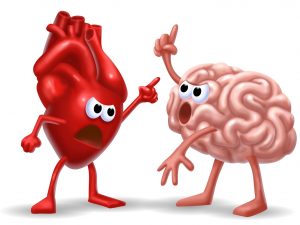Everywhere you look you may see an ad for a new diet program that promises to help you lose weight. Many people get sucked into the idea that they can lose weight fast on fad diets. However, these diets usually hard to stick with for the long term and may have long-term consequences. More and more research is finding that it is not necessarily the type of diet you are on that is good for health. However, the quality of food that you are eating is more important in health outcomes. And if you improve the quality of your diet, you may not only help your success with weight loss. New studies show that a healthier diet could also improve the strength and size of your brain.
What is a fad diet?
A fad diet is an eating regimen that promises big results, but may do so at the risk of your overall health. Such diets may involve:
- A promise of rapid weight loss. It is important to remember that losing more than 1-2 pounds a week is not healthy long-term. Any more than this could also involve the loss of muscle, bone, and water.
- Cutting out entire food groups or nutrients. A prime example of this is the low carbohydrate trend that continues on. Although there are some benefits to this type of diet, some may not follow it healthfully and may restrict nutrient and fiber-rich vegetables and fruits too much. This could lead to nutrient deficiencies long term. In addition, the lack of long-term studies on the effects of such popular diets can put your long-term health at risk. An example of this is the high-fat, moderate protein, very low carb keto diet. Although there are some studies that show positive heart health benefits, there are also studies that show long-term negative health effects on insulin resistance and liver health. Until larger and more randomized, placebo-controlled studies are done on such eating regimens, they should not be taken lightly.
- A diet that is hard to follow and limits the times you can eat. Many diets out there can help you lose weight. Of course cutting out food groups and severely restricting the foods you can eat can help you shed pounds. This is because they are basically just placing you on a low calorie diet hidden behind a shiny new veil. However, many of these diets are also hard to follow. If a diet is so restrictive that you can’t stick to it long-term then it is not going to be effective in providing any health benefits that it could offer. And diets that limit the times you eat during the day may show some benefit such as helping you to limit snacking. However, long-term and larger studies need to be done before benefits of such limited eating times can be confirmed.
Effect of healthy diet on brain health
A dutch study of about 4200 people 45 years and older looked at quality of diet and brain health. Study results show that those with higher diet quality scores had brains about 2 millimeters bigger than those with lower scores. This may not seem like a lot, except when you consider that the brain shrinks 3.66 millimeters every year. This means that a healthier diet could help prevent 6 months of aging in the brain. Healthy-fat based diets such as the Mediterranean diet has found similar results. It is suggested that any diet good for the heart will be good for the brain since it will help improve blood flow in the body.
Improve your diet by taking care of your heart
Besides eating plenty of fiber-rich fruits and vegetables, there are certain things you can do to improve the heart health of your diet. This can, in turn, improve the brain healthy components of your eating routine too.
- Add more healthy fats from fish: A recent study has found that consuming two 3.5-ounce servings of fish each week can help lower heart disease risk. Oily fish with high levels of omega-3 fatty acids are the best. Examples of this type of fish include salmon, albacore tuna, mackerel, lake trout, and sardines.
- Eat more plant-based healthy fats: Other sources of heart healthy fats include plant-based foods such as olives, avocado, and olive oil. Nuts, nut butters, and seeds like flax seed or chia seed are also examples of heart healthy fats.
- Exercise more. Regular aerobic exercise that gets your heart pumping, may boost the size of your brain and improve memory, according to a British Columbia study. It is recommended to engage in moderate exercise for at least 30 minutes, 5 days a week. Examples of such moderate exercise may include walking, light jogging, biking, or water aerobics. This 30 minutes a day can be broken up into 5 and 10 minute intervals if needed.
- Take heart and brain healthy supplements. Adding supplements such as fish oil can help you get your daily dose of healthy fats even if you do not eat fish. A quality fish oil is by Vita Sciences that provides 1000 milligrams of fish oil. This formula contains 400 milligrams of EPA and 300 milligrams of DHA. These components are well-known for their ability to support brain health.
-written by Staci Gulbin, MS, MEd, RD, LDN
Sources:
Godman, H. (April 9, 2014; updated April 5, 2018) “Regular exercise changes the brain to improve memory, thinking skills.” Harvard Health Publishing: Harvard Medical School.
Gordon, S. (May 16, 2018) “Better Diet, Bigger Brain.” HealthDay.
Kosinki, C. and Jornayvaz, F.R. (2017) “Effects of Ketogenic Diets on Cardiovascular Risk
Factors: Evidence from Animal and Human Studies.” Nutrients, 9: 517, doi:10.3390/nu9050517
Norton, A. (May 17, 2018) “Eat Fish Twice a Week to Ward Off Heart Disease, Experts Say.” HealthDay.
Stockman, MC., Thomas, D., Burke, J. et al. Curr Obes Rep (2018) 7: 172. https://doi.org/10.1007/s13679-018-0308-9
Wolfram, MS, RDN, LDN, T. (January 2, 2017) “Staying Away from Fad Diets.” Academy of Nutrition and Dietetics.
 It’s Friday night and the weekend is just beginning. After a long week of work, you may be thinking about that glass of wine or pint of beer to help you relax. In moderation, there is nothing wrong with a few drinks on the weekend. However, a recent study has found that drinking more than the suggested amount each week can shorten your life.
It’s Friday night and the weekend is just beginning. After a long week of work, you may be thinking about that glass of wine or pint of beer to help you relax. In moderation, there is nothing wrong with a few drinks on the weekend. However, a recent study has found that drinking more than the suggested amount each week can shorten your life. Nearly half of all Americans have high blood pressure, or hypertension. Having hypertension can put you at increased risk for heart disease and stroke, which are two of the top five leading causes of death in the United States. Therefore, it is important that if you have high blood pressure that you should work to be more heart healthy to prevent chronic disease. This usually includes eating a heart healthy diet and exercising. However, a recent survey shows that exercise is the last thing people want to do to try and lower their blood pressure.
Nearly half of all Americans have high blood pressure, or hypertension. Having hypertension can put you at increased risk for heart disease and stroke, which are two of the top five leading causes of death in the United States. Therefore, it is important that if you have high blood pressure that you should work to be more heart healthy to prevent chronic disease. This usually includes eating a heart healthy diet and exercising. However, a recent survey shows that exercise is the last thing people want to do to try and lower their blood pressure. Eat your veggies, they say. Whether you are trying to lose weight, improve your blood pressure, or just simply trying to live well, you may be told to eat more fiber in your diet. Fiber is not only good for managing weight or keeping your heart healthy though. A recent study has found that more fiber in your diet may actually help improve the health of those with type 2 diabetes.
Eat your veggies, they say. Whether you are trying to lose weight, improve your blood pressure, or just simply trying to live well, you may be told to eat more fiber in your diet. Fiber is not only good for managing weight or keeping your heart healthy though. A recent study has found that more fiber in your diet may actually help improve the health of those with type 2 diabetes. Staying active has many benefits. In particular, you may have been told by a healthcare provider to move more to help manage weight or improve heart health. However, a recent study has found that a walk in the park may also reduce stress levels in the body.
Staying active has many benefits. In particular, you may have been told by a healthcare provider to move more to help manage weight or improve heart health. However, a recent study has found that a walk in the park may also reduce stress levels in the body. Heart disease is the number one cause of death for both mean and women in the United States. Therefore, it is no surprise that researchers are looking endlessly for ways to reduce risk of this condition. A recent study has found that for those with diabetes, the earlier diagnosis, the lower the heart disease risk later on in life.
Heart disease is the number one cause of death for both mean and women in the United States. Therefore, it is no surprise that researchers are looking endlessly for ways to reduce risk of this condition. A recent study has found that for those with diabetes, the earlier diagnosis, the lower the heart disease risk later on in life. Vitamin D, known as the sunshine vitamin, is a very important nutrient for overall health. Best known for its work in helping strengthen bones and teeth, vitamin D is starting to get more attention for other benefits it could provide. A recent study reports that cells damaged by heart attack or stroke may be repaired by vitamin D3.
Vitamin D, known as the sunshine vitamin, is a very important nutrient for overall health. Best known for its work in helping strengthen bones and teeth, vitamin D is starting to get more attention for other benefits it could provide. A recent study reports that cells damaged by heart attack or stroke may be repaired by vitamin D3. Like millions of other people, you may be hoping to lose some weight in this new year. However, the confusing part may be what eating plan, or shall I say “diet,” should you choose to follow? There is so much information in the media today making all sorts of weight loss claims. They may all seem promising, but not all may provide you the nutrients you need to succeed long-term. However, a recent report found that the DASH diet may be the answer to get you to your weight loss goal.
Like millions of other people, you may be hoping to lose some weight in this new year. However, the confusing part may be what eating plan, or shall I say “diet,” should you choose to follow? There is so much information in the media today making all sorts of weight loss claims. They may all seem promising, but not all may provide you the nutrients you need to succeed long-term. However, a recent report found that the DASH diet may be the answer to get you to your weight loss goal. Every new year, many of us make resolutions to be healthier. Whether it be weight loss, exercising more, eating healthier, or managing stress better, such resolutions usually start off strong. However, by early spring, such goals usually lose steam and get pushed off until the next new year. That is why it is important to plan ahead before making any goals so you can make sure they are realistic and backed up with a lasting motivating factor. With such planning, you can make your new year’s goals come true this year and maintain such healthy habits for the long-term.
Every new year, many of us make resolutions to be healthier. Whether it be weight loss, exercising more, eating healthier, or managing stress better, such resolutions usually start off strong. However, by early spring, such goals usually lose steam and get pushed off until the next new year. That is why it is important to plan ahead before making any goals so you can make sure they are realistic and backed up with a lasting motivating factor. With such planning, you can make your new year’s goals come true this year and maintain such healthy habits for the long-term.